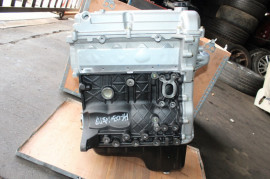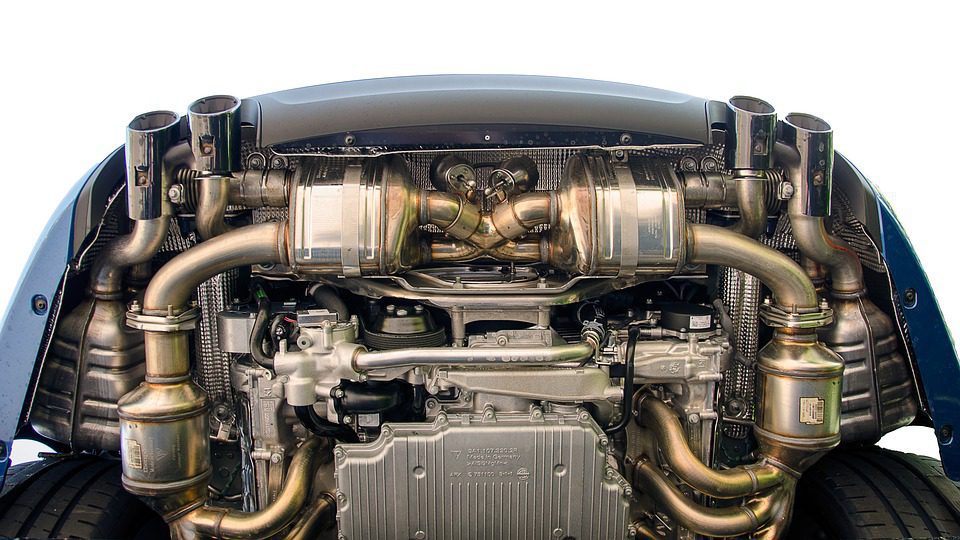Opel Corsa Engine: Performance and Integrity for Your Vehicle
Opel Corsa Engine: Performance and Integrity for Your Vehicle
Blog Article
Exploring the Inner Operation of a Compact Automobile's Engine System
As motorists, we typically take for provided the elaborate processes that take place within the confines of our vehicle's engine system. The small yet complicated machinery that pushes us ahead is a wonder of design precision and control. From the controlled surges in the combustion chamber to the precise timing of gas shot, every element plays a vital role in the smooth operation of the engine. In this expedition of a small vehicle's engine system, we will unravel the internal workings of this mechanical symphony, clarifying the secrets that drive us forward on our everyday journeys.
Burning Refine Summary
The combustion process in a portable automobile's engine system is a vital device that efficiently converts fuel right into power to power the vehicle. This process occurs within the combustion chamber of the engine, where fuel and air mix, ignite, and create regulated explosions. The combustion process contains 4 primary stages: consumption, exhaust, power, and compression.
During the intake phase, the piston moves downward, drawing in a blend of air and gas into the combustion chamber. This downward motion creates the power required to drive the vehicle. This cyclic combustion process is essential to the operation of a small vehicle's engine system, making sure reliable power conversion for propulsion.
Piston and Cyndrical Tube Communication

The piston's exact fit within the cylinder is crucial for keeping optimum compression and protecting against power loss throughout burning. Limited clearances in between the piston and cylinder walls guarantee efficient sealing, allowing the piston to relocate efficiently without permitting gases to leakage past. Appropriate lubrication is additionally vital to lower rubbing and wear in between these parts, improving longevity and efficiency.
Furthermore, the design and products made use of in producing the piston and cylinder impact engine performance and durability. Modern engines often employ lightweight yet durable products like aluminum alloys for pistons and cylinder liners to reduce inertia and boost thermal effectiveness. In general, the unified communication between the piston and cyndrical tube is essential to the engine's performance and general efficiency.
Fuel Shot System Functionality
Fuel injection systems in portable automobile engines play an important role in specifically providing gas to the burning chamber for regulated and efficient ignition. The gas injection system operates by injecting gas into the combustion chamber at the ideal moment throughout the engine's procedure (opel corsa engine). This exact timing guarantees that the gas blends evenly with the air for proper burning, leading to enhanced gas effectiveness published here and lowered discharges
There are primarily 2 sorts of fuel injection systems utilized in portable car engines: port gas injection (PFI) and direct fuel shot (DFI) PFI systems inject fuel right into the consumption port before the consumption shutoff, while DFI systems inject fuel directly right into the burning chamber. Both systems have their advantages, with DFI using far better gas atomization and PFI supplying a much more cost-effective service.
Recognizing Engine Cooling Mechanisms
Effective procedure of a compact car's engine depends greatly on the efficiency of its cooling devices. Engine air conditioning is vital to protect against getting too hot, which can lead to significant damage and decreased performance. The air conditioning system in a compact car normally contains numerous components collaborating to regulate the engine temperature level. One essential part is the radiator, which uses coolant to absorb heat from the engine. As the hot coolant moves via the radiator, it launches warmth into the air, cooling off before returning to the engine. The water pump distributes the coolant with the engine and radiator, making sure a constant circulation to control temperature. In addition, the thermostat aids regulate the coolant circulation to preserve ideal engine temperature. Some cars likewise have cooling fans that trigger when extra cooling is required, such as throughout hefty web traffic or heat. Understanding these engine cooling mechanisms is vital for maintaining the efficiency and durability of a small lorry's engine system.

Exhaust System Components Explained
The ideal functioning of a portable automobile's over here engine cooling mechanisms relies on a complementary system known as the exhaust system, which consists of various necessary elements for ensuring effective emissions and engine performance. The exhaust system includes elements such as the exhaust manifold, catalytic converter, muffler, and tailpipe. The exhaust manifold accumulates exhaust gases from the engine's courses and cyndrical tubes them to the catalytic converter. The catalytic converter after that converts hazardous toxins in the exhaust into much less hazardous exhausts prior to launching them through the muffler and tailpipe.
One critical component of the exhaust system is the oxygen sensor, which checks the oxygen levels in the exhaust gases to assist regulate fuel intake and ensure optimal engine efficiency. opel corsa engine. In addition, the resonator may exist in some exhaust systems to minimize sound levels. In general, the exhaust system plays a crucial duty in maintaining engine effectiveness, reducing hazardous exhausts, and guaranteeing a quieter driving experience for small lorry proprietors

Final Thought
To conclude, the small vehicle's engine system is a complex combination of components that interact to facilitate the combustion process, transform gas right into power, and expel waste gases. Understanding the inner functions of the engine system, consisting of the piston and cyndrical tube communication, gas shot system, engine air conditioning devices, and exhaust system parts, is crucial for keeping optimal performance and efficiency of the car.
The combustion process in a compact car's engine system is an important device that efficiently converts fuel right into power to power the vehicle.Gas shot systems in portable lorry engines play an essential duty in precisely delivering fuel to the burning chamber for reliable and regulated ignition.There are mainly two types of gas shot systems made use of in compact car engines: port fuel injection (PFI) and direct gas injection (DFI) Comprehending these engine air conditioning mechanisms is crucial for preserving the efficiency and long life of a portable automobile's see page engine system.
The ideal performance of a compact vehicle's engine air conditioning systems depends on a complementary system known as the exhaust system, which consists of different vital components for making sure reliable discharges and engine performance.
Report this page